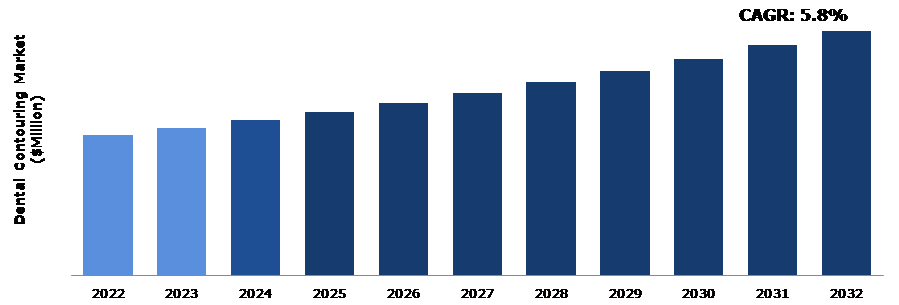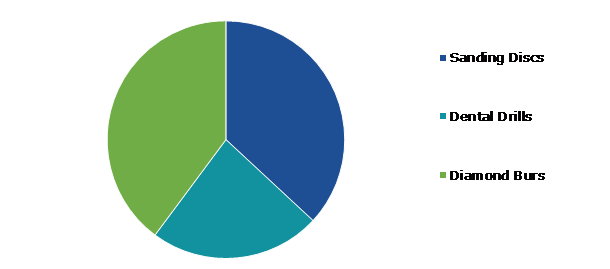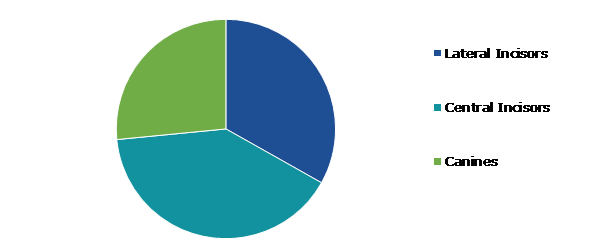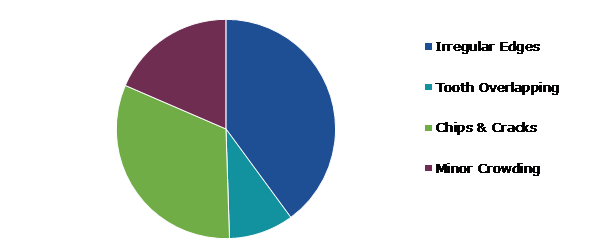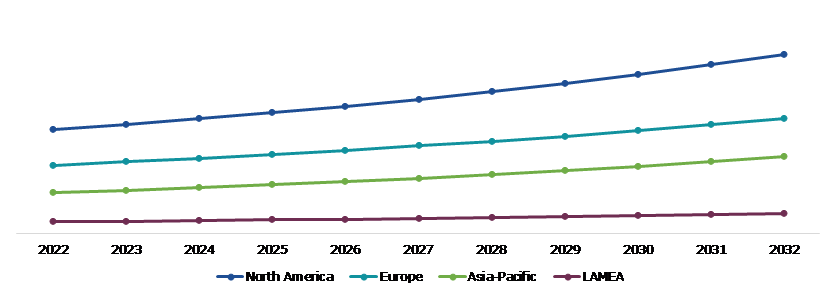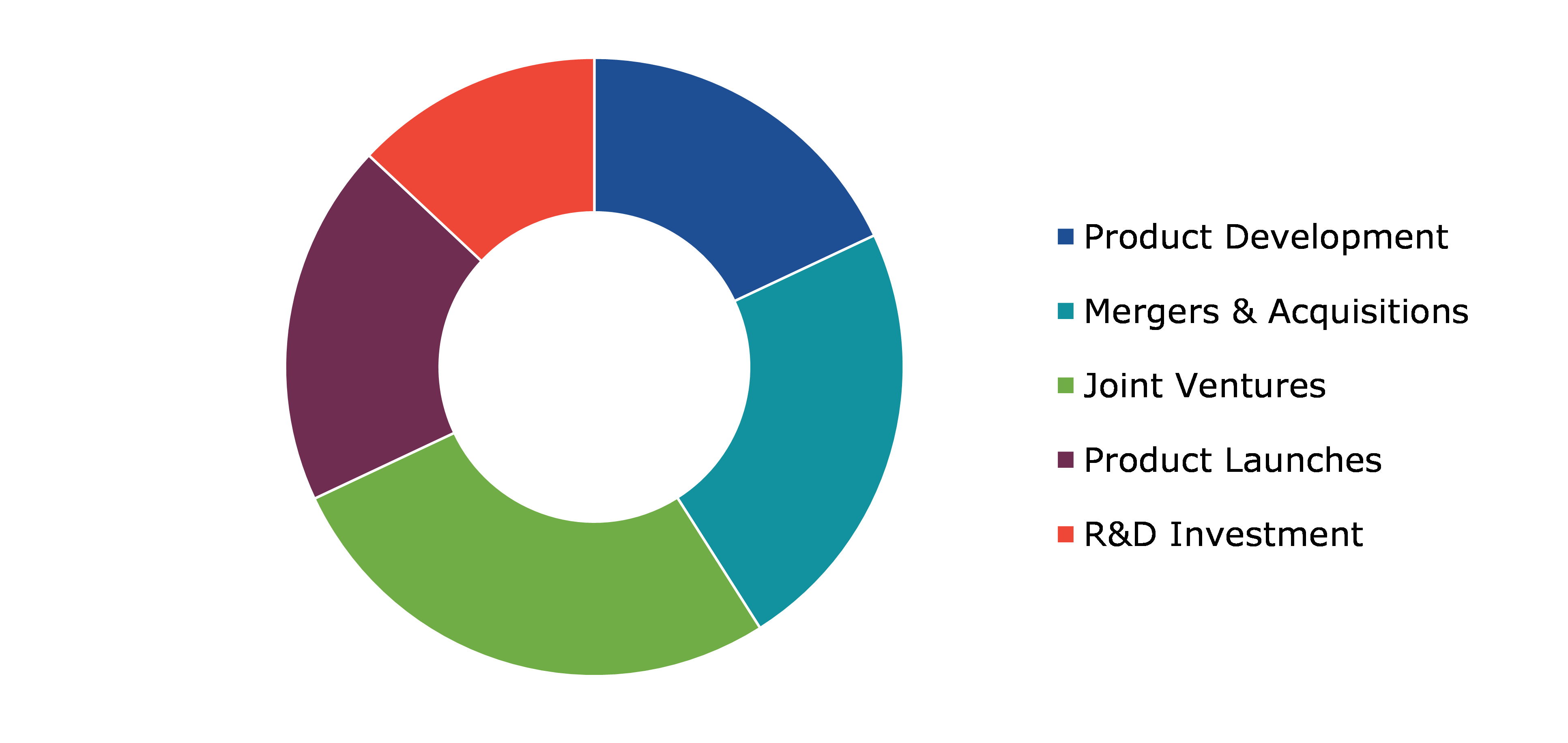Global Dental Contouring Market Report
RA09166
Global Dental Contouring Market by Equipment Type (Sanding Discs, Diamond Burs, and Dental Drills), Site (Lateral Incisors, Central Incisors, and Canines), Application (Irregular Edges, Chips & Cracks, Tooth Overlapping, and Minor Crowding), and Region (North America, Europe, Asia-Pacific, and LAMEA): Opportunity Analysis and Industry Forecast, 2023-2032
Dental Contouring Overview
Enameloplasty is a procedure that is also known as tooth reshaping or contouring of the teeth. When a tooth needs more work than contouring, dental bonding can be done in addition to contouring. Two of the most popular cosmetic dentistry procedures are contouring and bonding because they are quicker and less expensive than other procedures.
According to WHO, more than 3.5 billion people suffer from oral diseases, without any notable improvement of the situation between 1990 and 2017. Untreated dental caries in permanent teeth is the single most prevalent condition globally, affecting 2.3 billion people. An estimated 267 million people, primarily older people, are considered to be affected with severe periodontal disease, a primary contributor to total tooth loss. The Health Policy Institute in the U.S. estimated the dental expenditure to stand at $123.9 billion for the year 2021, which is only 80% of its pre-pandemic level.
Global Dental Contouring Market Analysis
The global dental contouring market size was $2,576.10 million in 2022 and is predicted to grow with a CAGR of 5.8%%, by generating a revenue of $4,488.20 million by 2032.
Source: Research Dive Analysis
COVID-19 Impact on the Global Dental Contouring Market
The COVID-19 pandemic has had a significant impact on the healthcare industry, including dental care. The mode of transmission of COVID-19 was believed to occur through close contact involving respiratory droplets and aerosols. Given the unique characteristics of dental procedures, including the generation of aerosols and the close proximity between dental practitioners and patients, there was a recognition of the potential for dentistry to contribute to the nosocomial transmission of infections. The bidirectional risk of infection spread between patients and dental providers highlighted the importance of implementing extra precautionary measures to curb the transmission of COVID-19. As a result of the COVID-19 pandemic, in the U.S., dental services were utilized 75% less frequently in March 2020 and 79% less frequently in April 2020, compared to the same months in 2019.
According to International Monetary Fund (IMF) projections, the world economy contracted significantly during the period of the pandemic. According to the organization, the decrease was at its worst level since the 1930s Great Depression. Due to the pandemic, the dental profession saw the emergence of tele dentistry. Tele dentistry is an innovative method of health service that can help with patient triage, communication with follow-up patients, discussion of investigational findings, and clinical guidance.
Increasing Awareness Among the People to Drive the Growth of Market
There is an increase in pressure to maintain appearance due to social media, celebrities, and society, which increases the need for fixing problems like cracked or chipped teeth, crooked teeth, uneven tooth length, and tooth gaps. Millions of people each year encounter oral injuries that result in incidents like cracked, chipped, or knocked-out teeth. This problem can be especially seen in children and young people. Rising awareness among the younger population is expected to drive the market revenue growth during the forecast years.
High Cost of Dental Contouring to Restrain the Growth of the Market
Dental contouring varies in price depending on each patient's circumstances, however according to American Cosmetic Dentistry, the cost is often between $50 and $500 per tooth. Due to the high cost of the process, the expansion of the dental contouring market is projected to be hampered. While dental contouring has both cosmetic and functional benefits, the high cost may discourage some potential patients. Professional costs, equipment, and materials all add to the total cost of the treatment. Because cost-effectiveness is a major issue for people seeking dental procedures, the high costs associated with dental contouring could potentially limit market expansion.
Technological Advancements to Create Growth Opportunities in the Market
Artificial Intelligence (AI) is altering how dentistry is viewed, as it has cut down on costs, errors, and procedure time. With the help of AI, a software that can perform, validate, evaluate, forecast, and analyze tasks in a preset context with marginal accuracy has been developed. The software's capabilities can help in accurately evaluating tooth reshaping treatments, ensuring that the removal of enamel is done within optimal parameters to avoid tooth damage. Currently, established robotic systems use haptic robotic technology to provide precise guidance during surgery. Robotics enable dentists to conduct procedures with unprecedented success and reduce the possibility of failing implants. Future advancements in robotics can make the procedures for dental contouring easy and fast. The treatment has the potential to eventually replace all natural teeth that are lost or broken. Ongoing research is focusing on creating innovative treatments for tooth regeneration.
Global Dental Contouring Market Share, by Equipment Type, 2022
Source: Research Dive Analysis
The diamond burs sub-segment accounted for a dominant market share in 2022. Dental burs are rotary cutting tools containing several different-shaped cutting heads and two or more razor-sharp blades. They are made to attach to the rotary dental handpiece for quick and effective dental work and are needed for cutting, grinding, and removing hard and soft tissues. When a cut requires exceptional precision, diamond burs are essential because they facilitate faster and smoother cutting. Diamond burs with a finer grit can give an enhanced polish, making them better suited for precision work. Potential benefits of diamond burs include decreased noise, little gingival tissue damage, increased bur endurance, better proximal cavity access, reduced risk of hitting an adjacent tooth due to high inclination angles, low patient risk of metal contamination, a prolonged lifespan, enhanced resistance to abrasion, lesser heat generation, and superior efficiency for cutting both enamel and dentin.
Global Dental Contouring Market Share, by Site, 2022
Source: Research Dive Analysis
The central incisors sub-segment accounted for a dominant market share in 2022. Treatment of central incisors is extremely challenging because of their importance to facial esthetics. On the basis of clinical and radiographic assessment, an impacted central incisor is usually diagnosed correctly. Several local and systemic factors may result in central incisor impaction. The most prevalent etiological factors contributing to impacted central incisors include over-retained deciduous teeth, additional teeth, ectopic eruption, and crowding. The management of an affected central incisor necessitates careful planning and an interdisciplinary approach. As there is a risk of failure due to ankylosis, loss of attachment, external root resorption, and root exposure after orthodontic retraction, managing an impacted central incisor successfully is a major clinical challenge for orthodontists. A crown lengthening and loss of attachment caused by improper flap design surgical technique, which is functionally and esthetically unacceptable, requires periodontal surgery.
Global Dental Contouring Market Share, by Application, 2022
Source: Research Dive Analysis
The irregular edge sub-segment accounted for a dominant market share in 2022. The irregular edges need special attention as they are exposed by a laugh and can be easily seen by people. Irregular tooth edges are also termed tooth jagging, which is one of the primary dental problems found in the population. Orofacial flexibility due to different etiological factors results in irregular edges, which cause many troubles, like psychological troubles related to improper dentofacial visual appearances, incapability of oral functioning such as chewing, ingesting, and speech, and higher sensitivity to trauma and periodontal diseases. When the tooth is broken or chipped, it results in irregular tooth edges. The nerves in the tooth may get exposed due to this, which causes pain. Accidental impacts to the mouth can result in uneven or irregular edges. Irregular edges can also occur due to cavities or old weakened fillings, which make teeth weak and expose them to injury.
Global Dental Contouring Market Size & Forecast, by Region, 2022-2032 ($Million)
Source: Research Dive Analysis
The North America dental contouring market generated the maximum revenue in 2022. According to the American Dental Association, data from 2001 to 2020 showed that the number of people receiving oral health care services rose from 1.4 million to 5.2 million. One-third of these patients were under the age of 18 in 2017. The number of predoctoral students enrolled in dental schools is also rising; in fact, the 25,381 students enrolled for the 2018–19 academic year are the most predoctoral students ever. The population of the U.S. is growing and is expected to grow to 380 million by the year 2040, which is 19% more than the population in 2014. In the U.S., single or multiple implants, together with caps and crowns, are the most popular options for tooth replacement through cosmetic dentistry. Dental implants appear to be more popular in Canada. All these factors are anticipated to drive the market revenue growth in North America during the forecast period.
Competitive Scenario in the Global Dental Contouring Market
3M company manufactures innovative science-based products, including oral care products. The company offers technologies as per the customer's needs. The company manufactures a wide range of products, such as bonding agents, CAD/CAM dentistry, composites, dental implant equipment, finishing and polishing materials, glass ionomer restoratives, hand instruments, impression materials & equipment, and mixing & dispensing supplies. The company made sales in the healthcare sector alone worth $8,421 million in 2022, with sales growth of 2.0% from the previous year. Out of total sales from healthcare, oral care accounted for 16% of sales.
Source: Research Dive Analysis
Some of the leading players in the dental contouring market All smiles Dental, Apollo White Dental, Axiss Dental, Coast Dental, Cleveland clinic, Dental services Group, Elleven Dental, Highfield Dental & Facial Clinic, Mayo Clinic Dentistry, and Newton Dental Group.
| Aspect | Particulars |
| Historical Market Estimations
| 2021-2022 |
| Base Year for Market Estimation
| 2022 |
| Forecast Timeline for Market Projection
| 2023-2032 |
| Geographical Scope
| North America, Europe, Asia-Pacific, and LAMEA |
| Segmentation by Equipment Type
|
|
| Segmentation by Site
|
|
| Segmentation by Application
|
|
| Key Companies Profiled
|
|
Q1. What is the size of the global dental contouring market?
A. The size of the global dental contouring market was over $2,576.10 million in 2022 and is projected to reach $4,488.20 million by 2032.
Q2. Which are the major companies in the dental contouring market?
A. All smiles Dental and Apollo White Dental are some of the key players in the global dental contouring market.
Q3. Which region, among others, possesses greater investment opportunities in the future?
A. Asia-Pacific possesses great investment opportunities for investors in the future.
Q4. What will be the growth rate of the Asia-Pacific dental contouring market?
A. Asia-Pacific dental contouring market is anticipated to grow at 6.7% CAGR during the forecast period.
Q5. What are the strategies opted by the leading players in this market?
A. Agreement and investment are the two key strategies opted by the operating companies in this market.
1. Research Methodology
1.1. Desk Research
1.2. Real time insights and validation
1.3. Forecast model
1.4. Assumptions and forecast parameters
1.5. Market size estimation
1.5.1. Top-down approach
1.5.2. Bottom-up approach
2. Report Scope
2.1. Market definition
2.2. Key objectives of the study
2.3. Report overview
2.4. Market segmentation
2.5. Overview of the impact of COVID-19 on the global dental contouring market
3. Executive Summary
4. Market Overview
4.1. Introduction
4.2. Growth impact forces
4.2.1. Drivers
4.2.2. Restraints
4.2.3. Opportunities
4.3. Market value chain analysis
4.3.1. List of raw material suppliers
4.3.2. List of manufacturers
4.3.3. List of distributors
4.4. Innovation & sustainability matrices
4.4.1. Technology matrix
4.4.2. Regulatory matrix
4.5. Porter’s five forces analysis
4.5.1. Bargaining power of suppliers
4.5.2. Bargaining power of consumers
4.5.3. Threat of substitutes
4.5.4. Threat of new entrants
4.5.5. Competitive Rivalry intensity
4.6. PESTLE analysis
4.6.1. Political
4.6.2. Economical
4.6.3. Social
4.6.4. Technological
4.6.5. Environmental
4.7. Impact of COVID-19 on the dental contouring market
4.7.1. Pre-covid market scenario
4.7.2. Post-covid market scenario
5. Dental Contouring Market Analysis, by Equipment Type
5.1. Overview
5.2. Sanding Discs
5.2.1. Definition, key trends, growth factors, and opportunities
5.2.2. Market size analysis, by region, 2023-2032
5.2.3. Market share analysis, by country, 2023-2032
5.3. Dental Drills
5.3.1. Definition, key trends, growth factors, and opportunities
5.3.2. Market size analysis, by region, 2023-2032
5.3.3. Market share analysis, by country, 2023-2032
5.4. Diamond Burs
5.4.1. Definition, key trends, growth factors, and opportunities
5.4.2. Market size analysis, by region, 2023-2032
5.4.3. Market share analysis, by country, 2023-2032
5.5. Research Dive Exclusive Insights
5.5.1. Market attractiveness
5.5.2. Competition heatmap
6. Dental Contouring Market Analysis, by Site
6.1. Lateral Incisors
6.1.1. Definition, key trends, growth factors, and opportunities
6.1.2. Market size analysis, by region, 2023-2032
6.1.3. Market share analysis, by country, 2023-2032
6.2. Central Incisors
6.2.1. Definition, key trends, growth factors, and opportunities
6.2.2. Market size analysis, by region, 2023-2032
6.2.3. Market share analysis, by country, 2023-2032
6.3. Canines
6.3.1. Definition, key trends, growth factors, and opportunities
6.3.2. Market size analysis, by region, 2023-2032
6.3.3. Market share analysis, by country, 2023-2032
6.4. Research Dive Exclusive Insights
6.4.1. Market attractiveness
6.4.2. Competition heatmap
7. Dental Contouring Market Analysis, by Application
7.1. Irregular Edges
7.1.1. Definition, key trends, growth factors, and opportunities
7.1.2. Market size analysis, by region, 2023-2032
7.1.3. Market share analysis, by country, 2023-2032
7.2. Central Incisors
7.2.1. Definition, key trends, growth factors, and opportunities
7.2.2. Market size analysis, by region, 2023-2032
7.2.3. Market share analysis, by country, 2023-2032
7.3. Chips & Cracks
7.3.1. Definition, key trends, growth factors, and opportunities
7.3.2. Market size analysis, by region, 2023-2032
7.3.3. Market share analysis, by country, 2023-2032
7.4. Minor Crowding
7.4.1. Definition, key trends, growth factors, and opportunities
7.4.2. Market size analysis, by region, 2023-2032
7.4.3. Market share analysis, by country, 2023-2032
7.5. Research Dive Exclusive Insights
7.5.1. Market attractiveness
7.5.2. Competition heatmap
8. Dental Contouring Market, by Region
8.1. North America
8.1.1. U.S.
8.1.1.1. Market size analysis, by Equipment Type, 2023-2032
8.1.1.2. Market size analysis, by Site, 2023-2032
8.1.1.3. Market size analysis, by Application, 2023-2032
8.1.2. Canada
8.1.2.1. Market size analysis, by Equipment Type, 2023-2032
8.1.2.2. Market size analysis, by Site, 2023-2032
8.1.2.3. Market size analysis, by Application, 2023-2032
8.1.3. Mexico
8.1.3.1. Market size analysis, by Equipment Type, 2023-2032
8.1.3.2. Market size analysis, by Site, 2023-2032
8.1.3.3. Market size analysis, by Application, 2023-2032
8.1.4. Research Dive Exclusive Insights
8.1.4.1. Market attractiveness
8.1.4.2. Competition heatmap
8.2. Europe
8.2.1. Germany
8.2.1.1. Market size analysis, by Equipment Type, 2023-2032
8.2.1.2. Market size analysis, by Site, 2023-2032
8.2.1.3. Market size analysis, by Application, 2023-2032
8.2.2. UK
8.2.2.1. Market size analysis, by Equipment Type, 2023-2032
8.2.2.2. Market size analysis, by Site, 2023-2032
8.2.2.3. Market size analysis, by Application, 2023-2032
8.2.3. France
8.2.3.1. Market size analysis, by Equipment Type, 2023-2032
8.2.3.2. Market size analysis, by Site, 2023-2032
8.2.3.3. Market size analysis, by Application, 2023-2032
8.2.4. Spain
8.2.4.1. Market size analysis, by Equipment Type, 2023-2032
8.2.4.2. Market size analysis, by Site, 2023-2032
8.2.4.3. Market size analysis, by Application, 2023-2032
8.2.5. Italy
8.2.5.1. Market size analysis, by Equipment Type, 2023-2032
8.2.5.2. Market size analysis, by Site, 2023-2032
8.2.5.3. Market size analysis, by Application, 2023-2032
8.2.6. Rest of Europe
8.2.6.1. Market size analysis, by Equipment Type, 2023-2032
8.2.6.2. Market size analysis, by Site, 2023-2032
8.2.6.3. Market size analysis, by Application, 2023-2032
8.2.7. Research Dive Exclusive Insights
8.2.7.1. Market attractiveness
8.2.7.2. Competition heatmap
8.3. Asia-Pacific
8.3.1. China
8.3.1.1. Market size analysis, by Equipment Type, 2023-2032
8.3.1.2. Market size analysis, by Site, 2023-2032
8.3.1.3. Market size analysis, by Application, 2023-2032
8.3.2. Japan
8.3.2.1. Market size analysis, by Equipment Type, 2023-2032
8.3.2.2. Market size analysis, by Site, 2023-2032
8.3.2.3. Market size analysis, by Application, 2023-2032
8.3.3. India
8.3.3.1. Market size analysis, by Equipment Type, 2023-2032
8.3.3.2. Market size analysis, by Site, 2023-2032
8.3.3.3. Market size analysis, by Application, 2023-2032
8.3.4. Australia
8.3.4.1. Market size analysis, by Equipment Type, 2023-2032
8.3.4.2. Market size analysis, by Site, 2023-2032
8.3.4.3. Market size analysis, by Application, 2023-2032
8.3.5. South Korea
8.3.5.1. Market size analysis, by Equipment Type, 2023-2032
8.3.5.2. Market size analysis, by Site, 2023-2032
8.3.5.3. Market size analysis, by Application, 2023-2032
8.3.6. Rest of Asia-Pacific
8.3.6.1. Market size analysis, by Equipment Type, 2023-2032
8.3.6.2. Market size analysis, by Site, 2023-2032
8.3.6.3. Market size analysis, by Application, 2023-2032
8.3.7. Research Dive Exclusive Insights
8.3.7.1. Market attractiveness
8.3.7.2. Competition heatmap
8.4. LAMEA
8.4.1. Brazil
8.4.1.1. Market size analysis, by Equipment Type, 2023-2032
8.4.1.2. Market size analysis, by Site, 2023-2032
8.4.1.3. Market size analysis, by Application, 2023-2032
8.4.2. Saudi Arabia
8.4.2.1. Market size analysis, by Equipment Type, 2023-2032
8.4.2.2. Market size analysis, by Site, 2023-2032
8.4.2.3. Market size analysis, by Application, 2023-2032
8.4.3. UAE
8.4.3.1. Market size analysis, by Equipment Type, 2023-2032
8.4.3.2. Market size analysis, by Site, 2023-2032
8.4.3.3. Market size analysis, by Application, 2023-2032
8.4.4. South Africa
8.4.4.1. Market size analysis, by Equipment Type, 2023-2032
8.4.4.2. Market size analysis, by Site, 2023-2032
8.4.4.3. Market size analysis, by Application, 2023-2032
8.4.5. Rest of LAMEA
8.4.5.1. Market size analysis, by Equipment Type, 2023-2032
8.4.5.2. Market size analysis, by Site, 2023-2032
8.4.5.3. Market size analysis, by Application, 2023-2032
8.4.6. Research Dive Exclusive Insights
8.4.6.1. Market attractiveness
8.4.6.2. Competition heatmap
9. Competitive Landscape
9.1. Top winning strategies, 2022
9.1.1. By strategy
9.1.2. By year
9.2. Strategic overview
9.3. Market share analysis, 2021
10. Company Profiles
10.1. All smiles Dental
10.1.1. Overview
10.1.2. Business segments
10.1.3. Product portfolio
10.1.4. Financial performance
10.1.5. Recent developments
10.1.6. SWOT analysis
10.2. Apollo White Dental
10.2.1. Overview
10.2.2. Business segments
10.2.3. Product portfolio
10.2.4. Financial performance
10.2.5. Recent developments
10.2.6. SWOT analysis
10.3. Axiss Dental
10.3.1. Overview
10.3.2. Business segments
10.3.3. Product portfolio
10.3.4. Financial performance
10.3.5. Recent developments
10.3.6. SWOT analysis
10.4. Coast Dental
10.4.1. Overview
10.4.2. Business segments
10.4.3. Product portfolio
10.4.4. Financial performance
10.4.5. Recent developments
10.4.6. SWOT analysis
10.5. Cleveland clinic
10.5.1. Overview
10.5.2. Business segments
10.5.3. Product portfolio
10.5.4. Financial performance
10.5.5. Recent developments
10.5.6. SWOT analysis
10.6. Dental services Group
10.6.1. Overview
10.6.2. Business segments
10.6.3. Product portfolio
10.6.4. Financial performance
10.6.5. Recent developments
10.6.6. SWOT analysis
10.7. Elleven Dental
10.7.1. Overview
10.7.2. Business segments
10.7.3. Product portfolio
10.7.4. Financial performance
10.7.5. Recent developments
10.7.6. SWOT analysis
10.8. Highfield Dental & Facial Clinic
10.8.1. Overview
10.8.2. Business segments
10.8.3. Product portfolio
10.8.4. Financial performance
10.8.5. Recent developments
10.8.6. SWOT analysis
10.9. Mayo Clinic Dentistry
10.9.1. Overview
10.9.2. Business segments
10.9.3. Product portfolio
10.9.4. Financial performance
10.9.5. Recent developments
10.9.6. SWOT analysis
10.10. Newton Dental Group
10.10.1. Overview
10.10.2. Business segments
10.10.3. Product portfolio
10.10.4. Financial performance
10.10.5. Recent developments
10.10.6. SWOT analysis
Personalize this research
- Triangulate with your own data
- Request your format and definition
- Get a deeper dive on a specific application, geography, customer or competitor
- + 1-888-961-4454 Toll - Free
- support@researchdive.com

